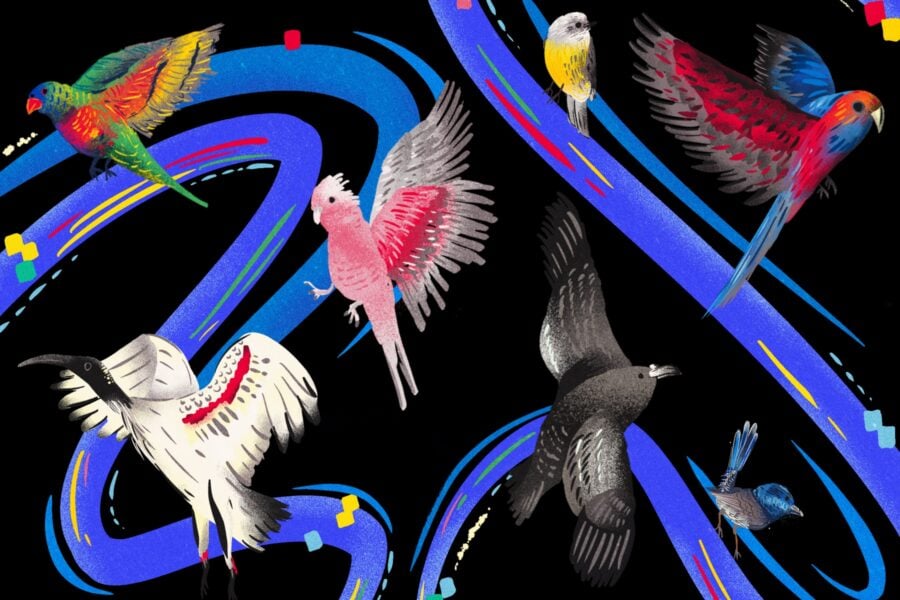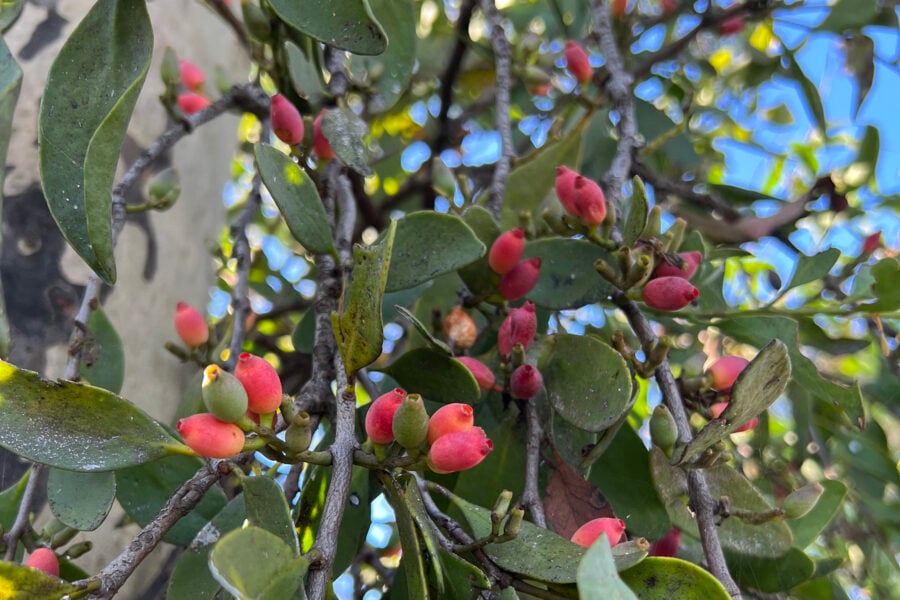Scale tales: a guide to Aussie skinks
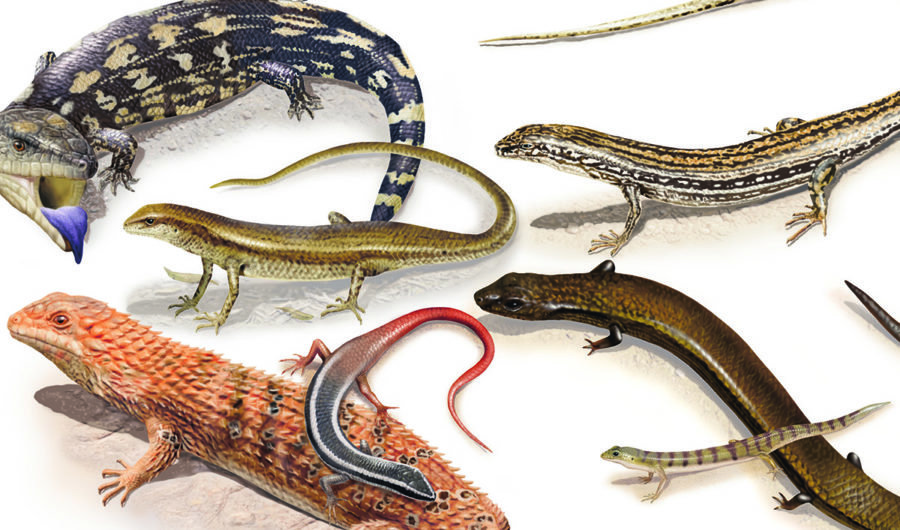
Year-round, the frantic scamper of skinks is an everyday scene in most Australian suburban gardens. This mainly sun-loving group — the largest family of Aussie lizards — is found in every part of the country.
Here’s a selection of the almost 400 species of skink found in Australia.
Lined fire-tailed skink
Morethia rucauda
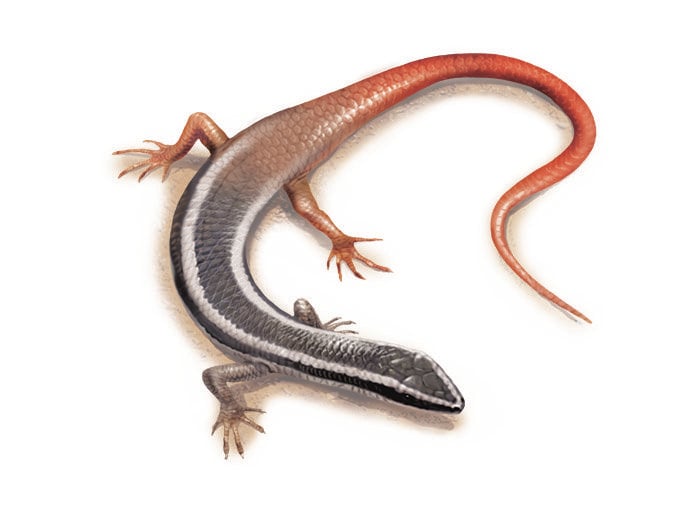
This little lizard is thought to wave its fiery tail to communicate.
Size: Up to 9 cm
Food: Spiders, ants, moths and beetles
Three-toed skink
Saiphos equalis

Sometimes mistaken for a snake, as it has very small legs, the three-toed skink may be found munching on crawling insects and worms in garden compost heaps.
Size: Up to 20 cm
Food: Crawling insects, centipedes, larvae and worms
Broad-banded sand swimmer
Eremiascincus richardsonii
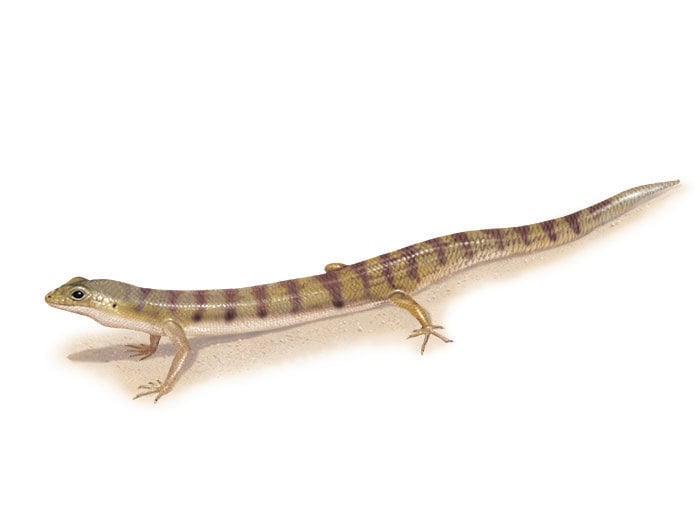
An aggressive, nocturnal desert hunter. Can escape predators in an instant by burrowing into sand with a wriggling, snake-like motion.
Size: Up to 30 cm
Food: Moths, termites, beetles, grasshoppers, spiders and occasionally small lizards
Blotched bluetongue lizard
Tiliqua nigrolutea
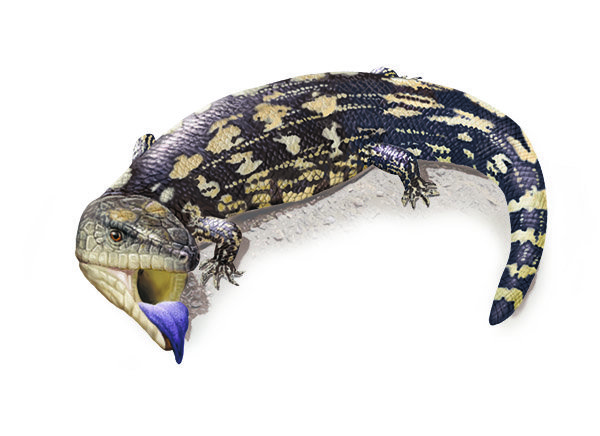
Australia is host to six species of bluetongue. The blotched bluetongue can often be seen basking on rocks and roads in south-eastern Australia.
Size: Up to 40 cm
Food: Insects, snails, slugs, worms, spiders, mice, fungi, flowers and fruit
Garden skink
Lampropholis guichenoti

The coppery garden skink can be found basking and foraging among the leaf litter of suburban gardens. Large groups of more than 18 lizards may latch onto each other during spring mating season in flamboyant territorial displays.
Size: Up to 10 cm
Food: Flies, ants, moths and worms
Lancelin Island skink
Ctenotus lancelini
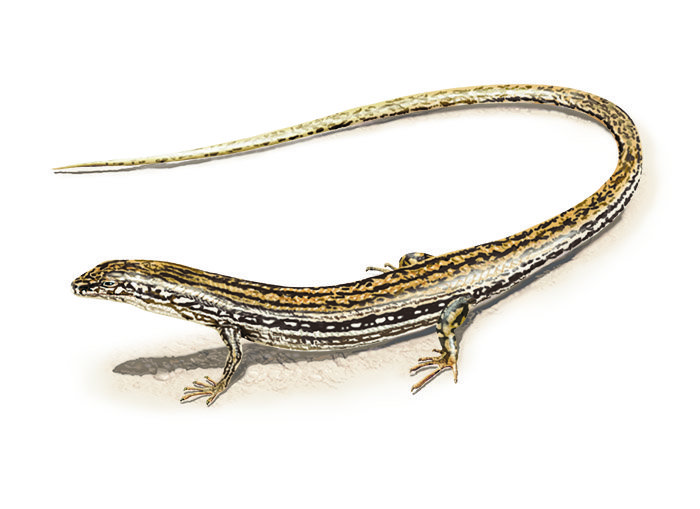
Known only to inhabit Lancelin Island, a 7.6 ha nature reserve 115 km north of Perth. Populations of this rare skink are threatened due to the invasion of its habitat by exotic weeds and disturbance by humans.
Size: Up to 8 cm
Food: Insects and larvae
Pygmy spiny-tailed skink
Egernia depressa

A prickly, desert-dwelling lizard that lives in small family groups in tree hollows, rock crevices and termite mounds. Evades predators by inflating its body with air to jam itself in wood or rock cracks.
Size: Up to 16 cm
Food: Primarily insects and some flowers, fruit, soft leaves and shoots
Land mullet
Egernia major
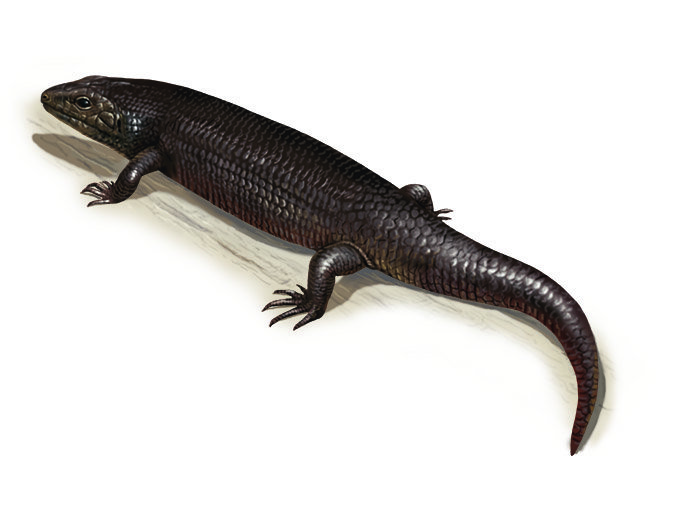
Powerfully built with a fish-like head and body, the land mullet is Australia’s largest skink. Foraging for plant material such as fungi and fruit on the rainfor-est floor, this giant can live up to 23 years.
Size: Up to 70 cm
Food: Fungi, fallen fruit, snails, slugs and insects
